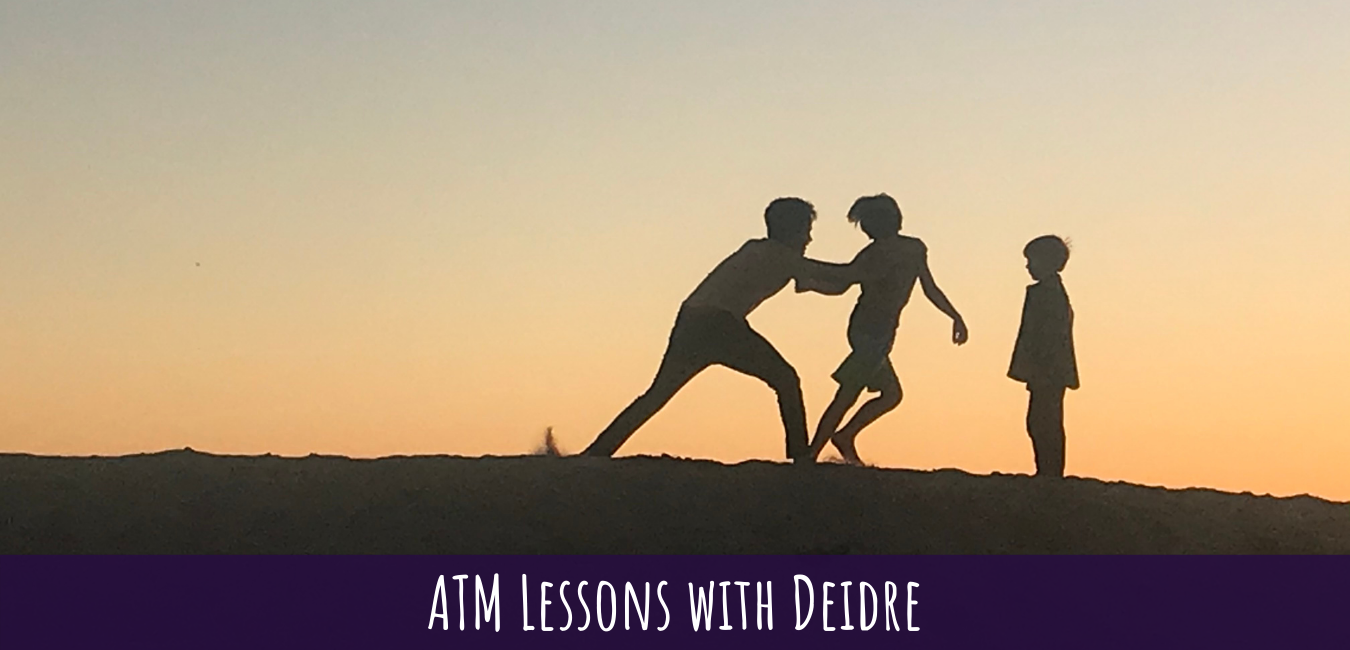
Feldenkrais lessons are gentle and pleasurable, emphasizing awareness of how you move.
Each lesson addresses different functions (turning, reaching, seeing, breathing, etc) with focus on different areas of the body.
Getting Started
Have enough floor space to lie down, with a pad or carpet or blankets under you for comfort. Feldenkrais lessons traditionally use moving blankets folded in half rather than yoga mats but anything that gives you a relief from the hard floor is fine. It is also good to have a towel or other hard padding (not a soft pillow) nearby in case you want to support your head or other parts during a lesson.
Tilt Knees Roll Feet
This favorite is a best beginning lesson -- or great for the end of a rough day! It involves coordinating gently tilting a knee with gentle rolling of the head. That's it! Of course, it softens everything in between. It was originally taught by Mark Reese on the early CD Moving Out of Pain. (Recorded 5pm 1/23/23)
Weld with the Breath
As a tribute to 2020, honoring all those with covid struggling to breathe, honoring George Floyd, and celebrating the miracle of this life and the breath that sustains it, we take a magical mystery tour* of the lungs, the diaphragm and the ribs. May we all breathe freely. (Recorded 8/31/2020)
* The phrase is Elizabeth Beringer’s.
Recovery for Neck & Shoulders
I developed this lesson during the covid pandemic as both an introduction to the Feldenkrais Method (insert mark) and as a way to relieve muscular tension. By differentiating shoulders from head, head from eyes, etc. and by inviting participation and support from the whole self, specifically pelvis and legs, the lesson relieves the shoulder and neck tension generated by sitting in a fixed position at the computer. (Recorded 1/3/2021)
Basic Flexion I: Forward
Basic Flexion II: Diagonal
I’ve divided the lessons on Basic Flexion and Lifting the Head on the Back into 2 sessions for clear and deep understanding of our capacity for soft mobility and articulation of the ribs moving into the self-protecting action of flexion. The 1st introduces basic flexion forward, the 2nd complicates it with diagonal movements. (Recorded 1/11/2021 & 1/19/2021)
Easier Turning with Bell Hand
Here, we call on “the bell hand” --, referring to the shape the hand makes as it repeats a single gesture -- to support a side-lying lesson on turning. By focusing attention on a soft, simple to execute repetitive gesture, the bell hand calms and tones the nervous system. I consider this and the other neurologically toning lessons to be a key to Feldenkrais’ method®. (Recorded 11/15/21)

*Sacred cites: I built these lessons on lessons taught by my teachers. They are primarily gleaned from my training with Elizabeth Beringer, from Moshe Feldenkrais’ CDs and his Alexander Yanai lessons (both the texts and Kwan Wong’s daily An AYaDay Zoom offering) from Elizabeth’s CDs as well as CDs by David Zemach-Bersin, Mark Reese, Arlyn Zones, Cliff Smythe, and from internet offerings by Lynette Reid, feldynotebook, and others.
Cover Image: Original Photography by Deidre Sklar
